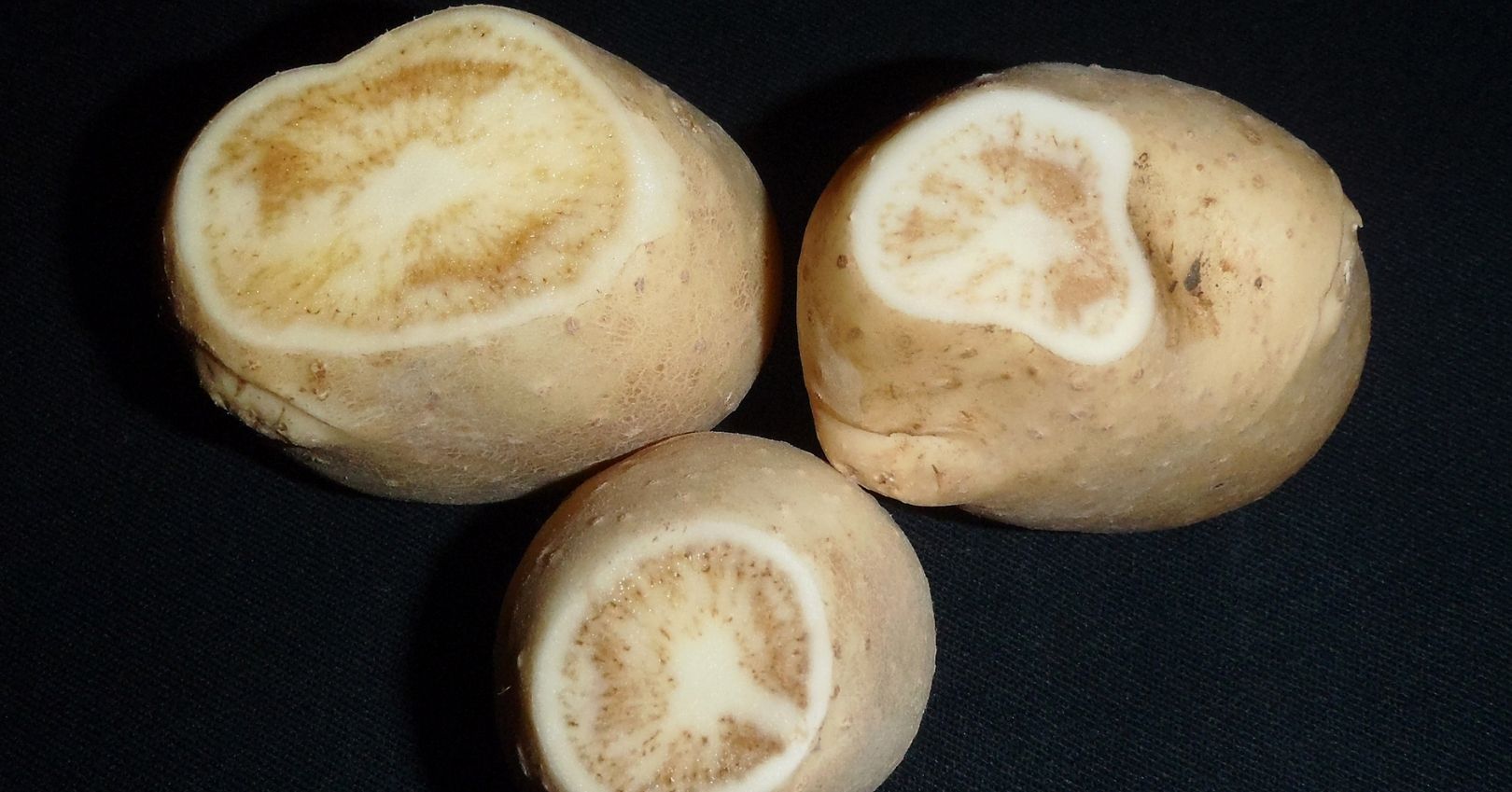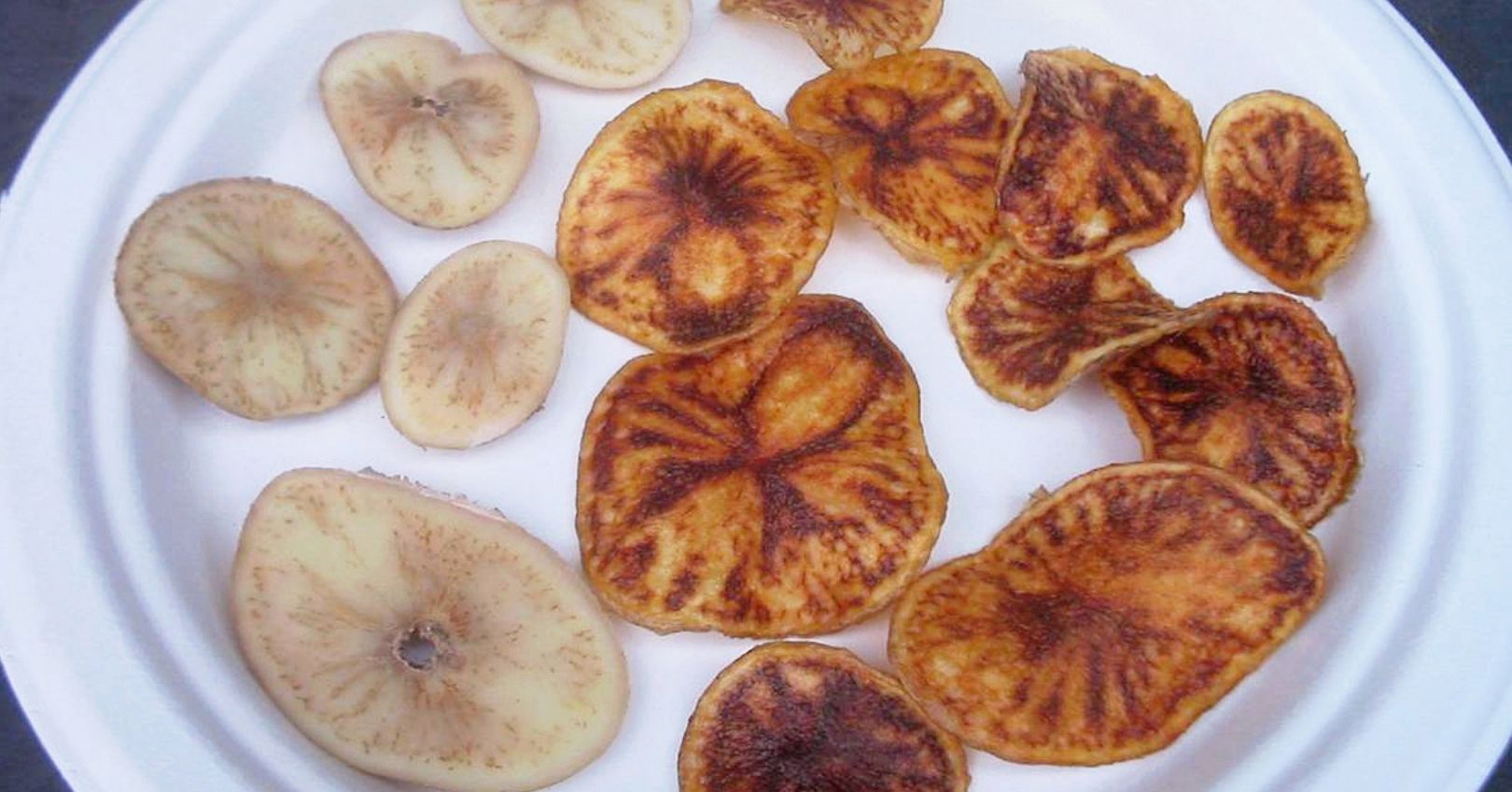Zebra Chip Disease



Casual Agent
Zebra chip disease is caused by the bacterium Candidatus Liberibacter solanacearum. The bacteria are transmitted when potato psyllids feed on susceptible hosts. The bacteria colonize the vascular tissue in the plant and tubers.
Symptoms
There are no above-ground symptoms specific to zebra chip disease. When psyllids feed, they cause pink to reddish discoloration of the foliage (sometimes mistaken for nutrient deficiency). If psyllids are detected along with the discolored foliage, there is a high chance that the bacteria are present as well.
Below-ground symptoms on potato tubers are only visible when they are cut. The vascular tissue in the tuber has a brown discoloration. The discoloration is even more pronounced when the potatoes are fried.
Disease Cycle
The bacteria are acquired by potato psyllids and then transmitted during feeding, where they then colonize the vascular tissue in the plant and tubers. Seed pieces from infected plants either do not sprout or produce only small, weak plants.
Managment
Management options are very limited.
- Control potato psyllids early in the season. Early detection of potato psyllids is important.
- Use yellow sticky cards. They will attract adult psyllids.
- Look for psyllids on the underside of the leaves. A hand lens helps to see them.
- There are no resistant potato varieties. Once the potatoes are infected there is no cure.

